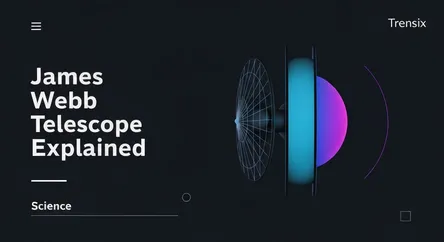Science
James Webb Telescope Explained

Discover the James Webb Space Telescope (JWST), NASA's infrared observatory revolutionizing our view of the early universe and distant worlds.
What is it?
The James Webb Space Telescope (JWST) is a large, infrared-optimized space observatory, considered the successor to the Hubble Space Telescope. A collaboration between NASA, the European Space Agency, and the Canadian Space Agency, it features a massive 6.5-meter primary mirror made of 18 gold-plated beryllium segments. Launched on December 25, 2021, its mission is to see the first stars and galaxies that formed in the early universe, study the formation and evolution of galaxies, understand star and planet formation, and characterize planetary systems and the origins of life.
Why is it trending?
JWST consistently captures headlines with its breathtaking and scientifically profound images. Since becoming operational, it has delivered the deepest and sharpest infrared images of the distant universe to date, revealing thousands of previously unseen galaxies and intricate cosmic structures like the "Cosmic Cliffs" in the Carina Nebula. Its ability to analyze the atmospheres of exoplanets for signs of water and other molecules fuels constant excitement and speculation about life beyond Earth. Each data release provides groundbreaking insights, keeping it a trending topic in science and media.
How does it affect people?
The telescope's discoveries directly impact our understanding of the cosmos and humanity's place within it. It helps answer fundamental questions about our origins. The technological innovation required to build JWST has spurred advancements in fields like optics, sensors, and materials science, which can have practical applications on Earth. For the public, JWST's stunning visuals inspire awe and wonder, promoting interest in STEM fields and fostering a global sense of connection to the vastness of the universe. It is a powerful tool for both discovery and education.